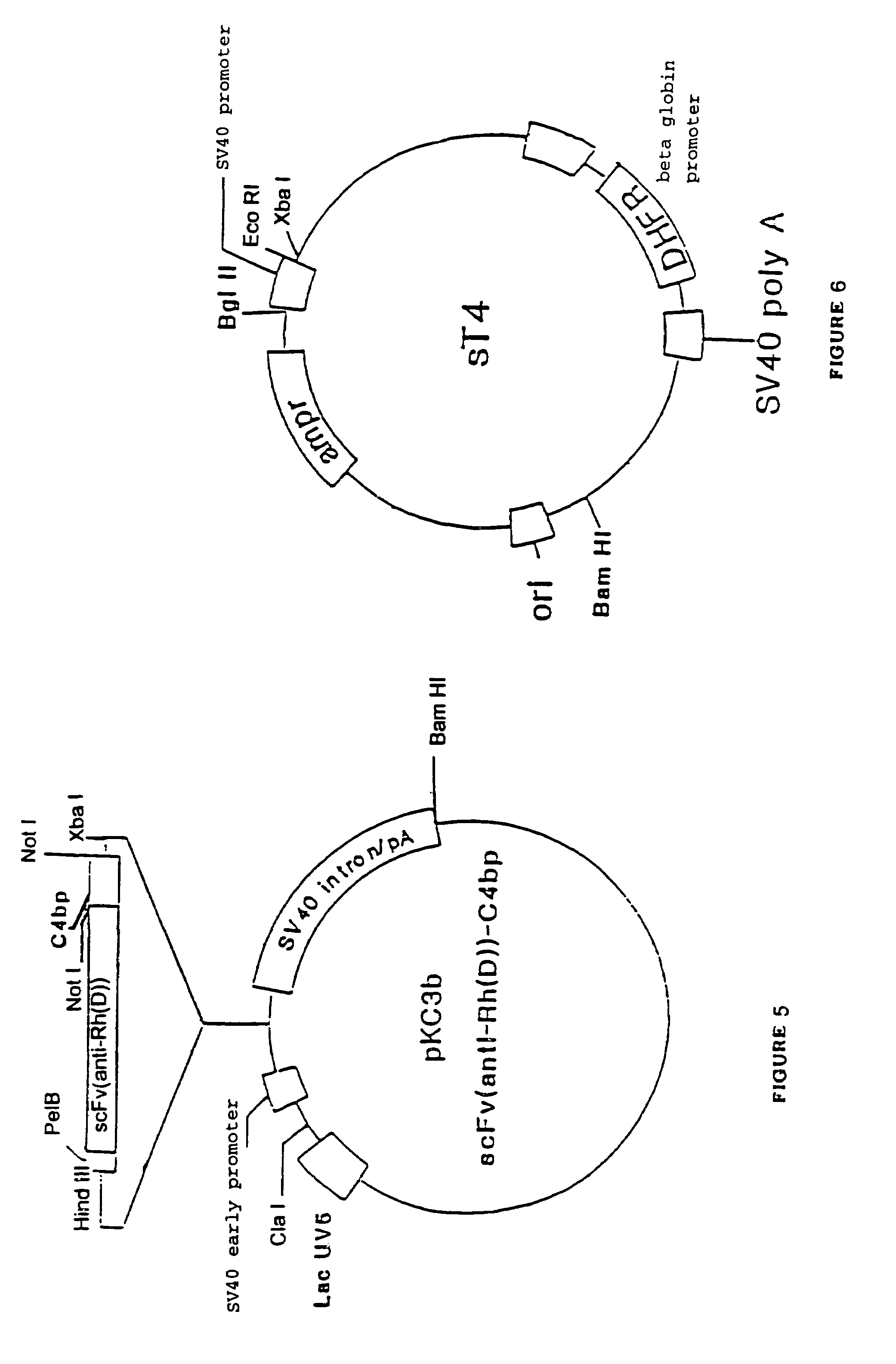α-β C4BP-type recombinant heteromultimeric proteins
a heteromultimeric protein and fusion protein technology, applied in the field of heteromultimeric fusion proteins, can solve the problems of difficult control of the physical state of the synthetic molecule, low immunomodulatory activity, and low success rate of monoclonal antibodies
- Summary
- Abstract
- Description
- Claims
- Application Information
AI Technical Summary
Benefits of technology
Problems solved by technology
Method used
Image
Examples
application example no.1
APPLICATION EXAMPLE NO. 1
Prevention of Anti-Rh(D) Alloimmunization.
[0102]Heteromultimeric molecules combining erythrocytic functions and CR1 are produced within the context of preventing anti-Rh(D) alloimmunization. They will make it possible to bind CR1 readily to erythrocytes, thereby ensuring the achievement of CR1 densities which can be fully controlled.
[0103]The antibody molecule used to generate the anti-Rh(D) scFv was produced and sequenced in Philippe ROUGER's laboratory at the Institut National de Transfusion Sanguine [National Blood Transfusion Institute] (INTS) (9).
Construction of Vectors which Comprise the Sequence Encoding the Anti-Rh(D) scFv and the Terminal Moiety of the α Chain of C4BP.
[0104]An epitope site of an anti-rhesus antibody was first of all reduced down to a structure of the scFv (denoting single-chain Fv) type for expression in E. Coli by means of transfecting with a phage vector.
[0105]Constructs of the scFv type are antibody fragments which represent the ...
application example no.2
APPLICATION EXAMPLE NO. 2
Extracellular Destruction of HIV
[0116]Even though the humoral immune response is unable to eradicate the HIV virus, it is nevertheless effective against a large number of infectious agents against which neutralizing antibodies are regularly produced by vaccinated subjects.
[0117]Natural antibodies can confer protection against a large number of bacterial or viral infectious agents which infect other species.
[0118]Certain antigenic motifs have been characterized as targets for this type of antibody in connection with their role in the peracute vascular rejection of xenogeneic transplants.
[0119]The potentially unfavorable role of the humoral immune response and of complement activation with regard to infection with HIV virus has been demonstrated.
[0120]Under certain circumstances, opsonization of the virions can facilitate ingestion by macrophages or binding of the virions to lymphocytes by way of cell receptors for complement or the IgG Fc fragment. On the oth...
PUM
| Property | Measurement | Unit |
|---|---|---|
| nucleic acid | aaaaa | aaaaa |
| affinity | aaaaa | aaaaa |
| time | aaaaa | aaaaa |
Abstract
Description
Claims
Application Information
 Login to View More
Login to View More - R&D
- Intellectual Property
- Life Sciences
- Materials
- Tech Scout
- Unparalleled Data Quality
- Higher Quality Content
- 60% Fewer Hallucinations
Browse by: Latest US Patents, China's latest patents, Technical Efficacy Thesaurus, Application Domain, Technology Topic, Popular Technical Reports.
© 2025 PatSnap. All rights reserved.Legal|Privacy policy|Modern Slavery Act Transparency Statement|Sitemap|About US| Contact US: help@patsnap.com



